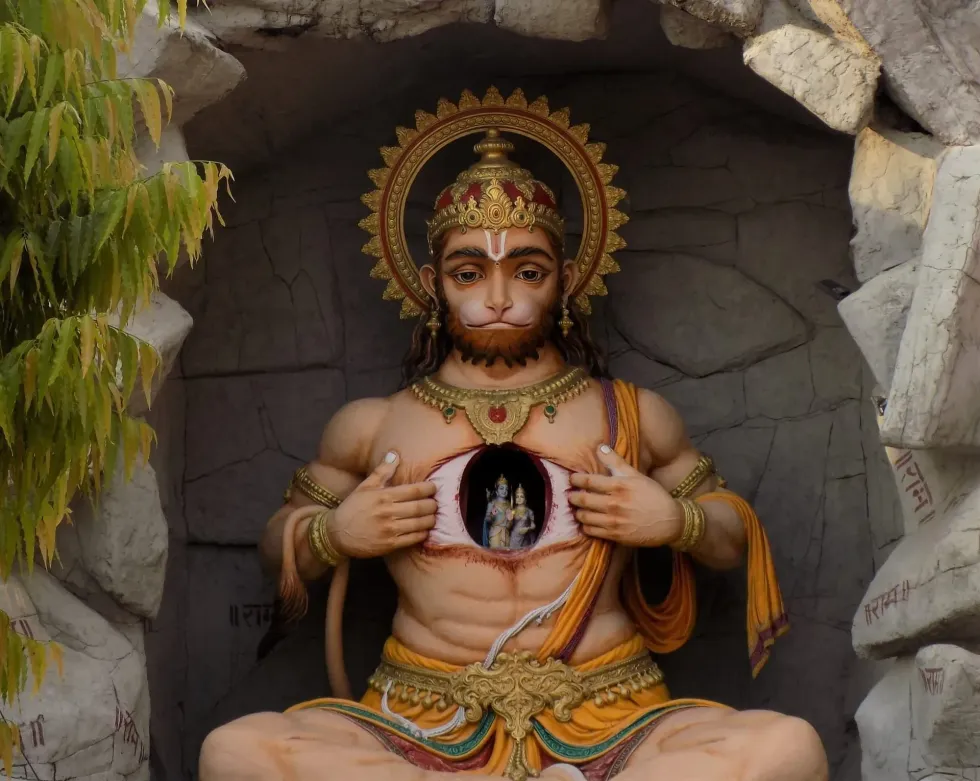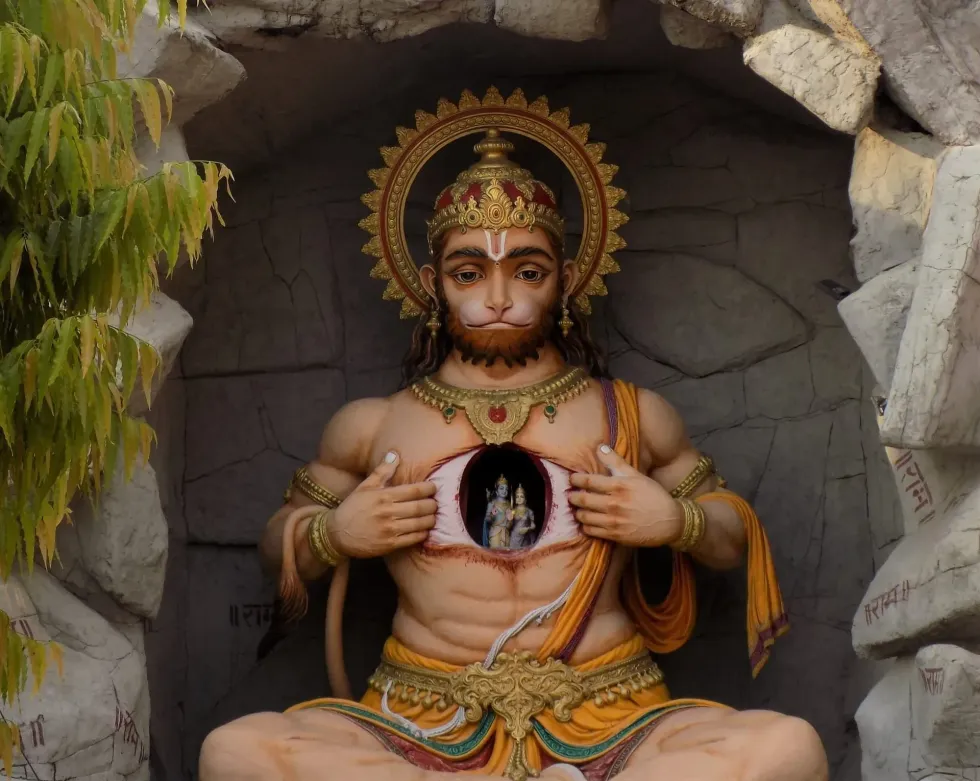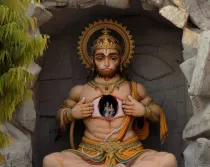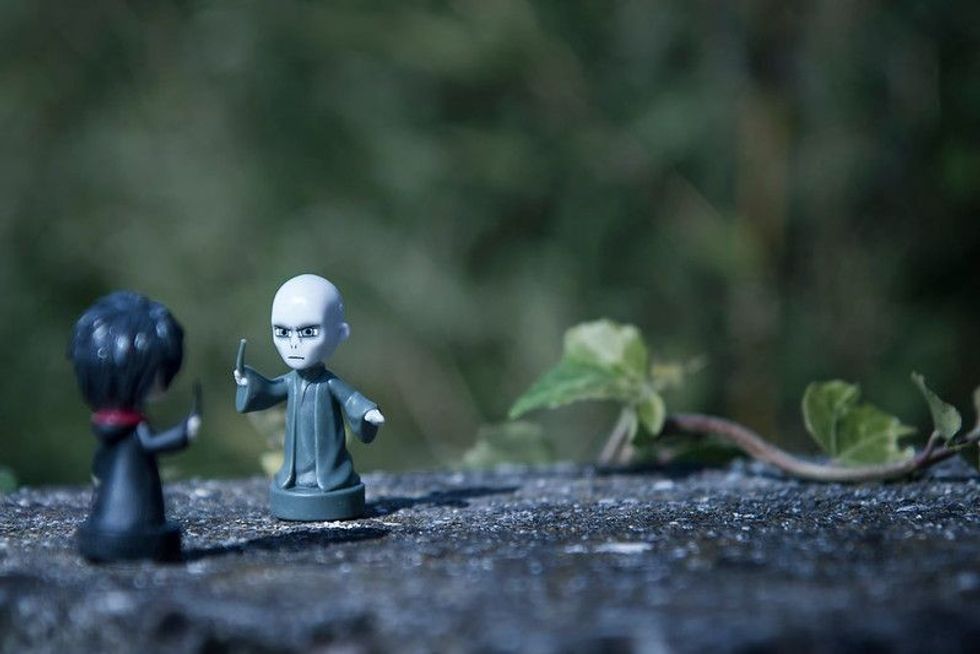21 Lord Hanuman Facts For Kids: Here's All You Need To Know!

In Hindu mythology, Hanuman is one of the most beloved deities from the Hindu epic, Ramayana.
Hanuman is the dutiful companion of king Rama, who was one of the primary characters in the Ramayana and its various variants.
Lord Hanuman is highly esteemed by those seeking strength and courage from one of Hindu mythology's most famous and respected deities. He is referenced in multiple other scriptures such as the famous 'Mahabharata,' numerous Puranas, and certain Jain texts as a 'Chiranjeevi' or 'immortal.'
Origin And Birth Details Of Hanuman According To Mythology
Hanuman's birth story; the story goes that back in the day, the demon King Ravana's raging actions used to alarm and shock all the gods. So they begged Lord Vishnu to help them find a solution to the problem.
Vishnu then promised the gods that he would come to earth in the shape and form of Rama, a human being. When the legendary Lord Shiva heard this, he proclaimed that he would additionally be at Lord Vishnu's service as an aide to his incarnation Lord Rama.
On the other hand, Parvati was upset by the choice since she would have to be separated from her loving husband. Lord Shiva then informed Parvati that he would adopt the appearance of a monkey so that he may live a modest lifestyle devoid of cultural and traditional ties.
As a result, he assumed the appearance of Hanuman, who, as promised, became the devoted aide of Lord Rama.
Therefore, 'pawanputra' Hanuman is the incarnation of Lord Shiva himself. Añjanā was Hanuman's mother who was dedicated to serving Lord Shiva.
She was indeed an Apsara in the kingdom of Lord Brahma in a past incarnation. A sage cursed her for bragging about her charms to be reborn as a female monkey.
Lord Brahma felt sorry for Anjana and brought her to earth, where she met the monkey king Kesari and fell in love with him, following which they duly got married.
Anjana also persisted in worshipping Lord Shiva. Lord Shiva was delighted with Anjana's dedication and promised that he'd be reborn as her son to free her from the curse.
Meanwhile, the Ayodhya king Dasharatha's wives were able to bear children after he performed a ritual called the 'puthrakameshti yajna.' A sacred rice pudding called 'kheer' was distributed as prasad (a devotional offering that is distributed to devotees) to all the wives of Dasharatha after the yajna.
Anjana was meditating when a kite (led by wind-god Pawan dev) stole part of this prasad and flew right over her and dropped it in her outstretched hands. Anjana consumed the kheer and subsequently gave birth to Hanuman.
Hanuman's birth name was Maruti. He was given this name because of the damage caused to his jaw by the thunderbolt of thunder-god Lord Indra.
In his mischief as a youngster, Maruti mistook the sun-god Surya for ripe fruit and shot towards him. The appalled Surya appealed to Lord Indra in his annoyance with the child's antics, and the latter struck the infant with his famed lightning bolt to stop the child in his tracks.
Hanuman comes from the Sanskrit language term Hanumat. 'Hanu' means 'jaw', and the suffix is 'mat', meaning 'one who has'. As a result, Hanuman refers to 'one who has a strong jaw.'
Hanuman's Role In Ramayana
In the Ramayana, Hanuman plays an active and major role in displaying various moments of courage, devotion, intellect, and heroism, which gives us important lessons regarding ways of living life. Some of the facts regarding the role of this incarnation of Lord Shiva are given below.
Panchamukhi Hanuman tale: While Ravana and Rama were fighting in the great war, Ahiravan, Ravana's brother, had kidnapped and held Lord Rama and Lord Lakshmana hostage. On the other hand, Lord Hanuman resolved to rescue Rama and Lakshmana.
So, he traveled to 'paatal loka' or the nether worlds to set Rama and Lakshmana loose. After this, Lord Hanuman took the shape of Panchamukhi Hanuman, which included Narasimha, Garuda, Varaha, and Hayagriva.
He subsequently slew Ahiravan by extinguishing five lights kindled in five separate directions. As a result, he rescued Lord Rama and Lakshmana from Ahiravan's grasp.
To treat the wounded Lord Lakshmana, Lord Hanuman shifted a whole peak. Lakshmana was gravely injured during the fierce struggle against the wicked King Ravana. His existence was on the line.
A specific plant called 'sanjeevani' from the Himalayas was required to rescue Lakshmana's life. Since he couldn't find the exact tree, Lord Hanuman lifted the entire mountain and finally returned to Lanka to rescue Lakshmana's life. It was an incredible display of heroism, power, fortitude, and devotion.
A sage condemns Lord Hanuman: Lord Hanuman was well-known as a youngster, and he would frequently disturb and mock the sages who sought refuge in his father's realm. Yet, once, while taunting a meditating sage, he was cursed by him.
As per the curse, he would forget all of his divine powers.
When Hanuman recognized his error and asked the senior for forgiveness, the sage advised Hanuman that he would only recall his powers if anybody notified him of them. Jambhavantha reminded Hanuman of his divine powers, which he might use to find Sita Mata, according to the legend Ramayana.
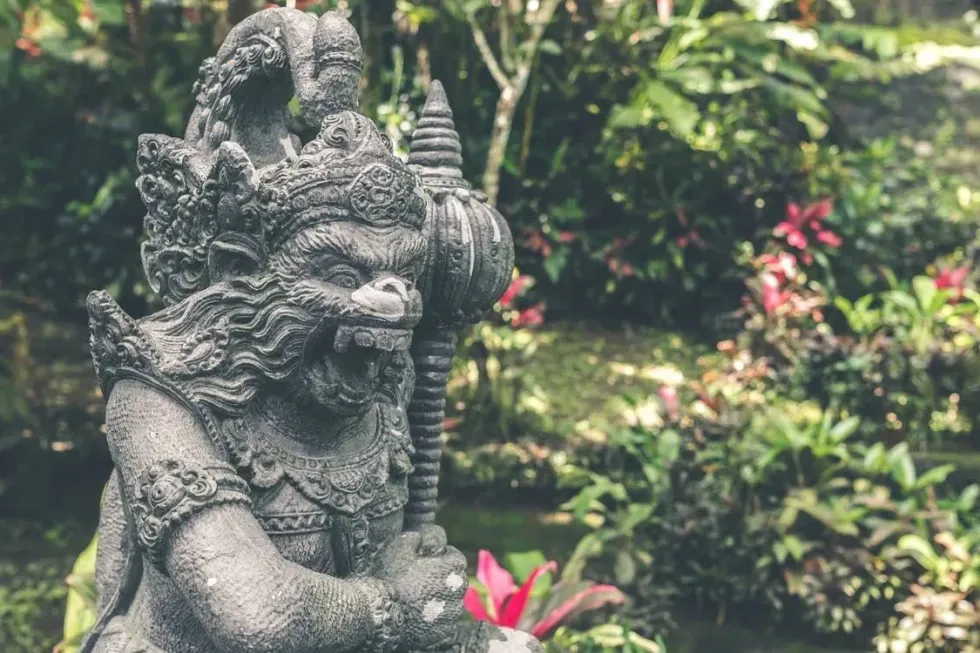
Powers And Strengths Of Hanuman
Lord Bhima and Lord Hanuman are actually siblings: Bhima was wind-god Lord Vayu's child as well. Bhima was looking for a flower for his spouse when he came upon a monkey asleep with his tail straddling the walkway. He requested that he shift his tail aside.
However, the monkey refused and requested that Bhima try to move it. With all his renowned might, Bhima was a haughty man and was unable to move or lift the tail.
As a result, he understood that this wasn't just any ordinary monkey. Hanuman was the one who had done it. He admitted to lying there solely to lessen Bhima's hubris.
Lord Hanuman defeated Lord Rama in a fight: Rama was told to slay Yayati by the sage Vishwamithra. Realizing the threat, Yayathi sought assistance from Hanuman, who pledged to protect Yayathi from all dangers.
Hanuman fought without a weapon, merely standing on the battleground reciting Rama's name. Hanuman was unaffected by the darts from Lord Rama's bow. After witnessing Hanuman's dedication and bravery, Rama eventually quit, and guru Vishwamitra released Rama from his vow.
Hanuman was already condemned to death by Lord Ram. However, the devotion and compassion that prevailed between Lord Ram and Hanuman enraged the celestial bard Narada.
So, to cause a rift between the pair, Narad ordered Hanuman to meet all the sages in Rama's palace, all except Vishwamitra. Vishwamitra was enraged and asked that Hanuman be sentenced to death. Lord Ram had to carry out the revered Vishwamitra's commands and sentenced Hanuman to death.
Lord Hanuman was hit by a slew of dangerous arrows, including the most lethal weapon, the brahmastra. But when Hanuman proceeded to continuously chant Rama's divine name, none of the weaponry could damage him.
The scholarly Hanuman: Lord Hanuman is known for his physical prowess, yet few people realize he was also a learned scholar. Sun-god Surya provided him with his schooling. Vedas, Tantra, and other Hindu texts were already familiar to him. Lord Hanuman, according to Tantriks, was extremely competent in this domain since he possessed dominion over eight occult abilities, including:
Anima, the ability to shrink the body.
Mahima, the ability to grow at will.
Laghima, fat loss ability at will.
Garima, ability to gain weight at will.
Prapti, the ability to go wherever and obtain whatever one wants.
Parakamya, complete control over one's emotions.
Vastiva, rule over all creatures.
Isitva, ability to both generate and demolish.
Hanuman was no less than a superhero with his multitudinous abilities.
Sugriva's and Lord Hanuman's Companionship: Lord Hanuman occurred to be studying teachings from the Sun God. Lord Hanuman was so clever that learning all texts required only 60 hours.
The Sun God was so taken aback by Hanuman's act that he dismissed the 'Guru Dakshina.' But, on the other hand, Hanuman was adamant about fulfilling the Guru Dakshina and appealed to the Sun God to grant him a chance to provide it.
When Lord Surya learned of this, he ordered Hanuman to join Sugriva, the chief of a monkey community.
Lord Hanuman easily accepted to be Sugriva's friend. It was the beginning of Lord Hanuman and Sugriva's long companionship.
Did you know that Lord Hanuman had a son? Lord Hanuman did have a son called Makardhwaja, even though he was a brahmachari by nature. So, after scorching Lanka using his tail, Lord Hanuman headed for a swim in the oceans of Lanka. Makardhwaja is apparently said to have been created via a big fish consuming Hanuman's sweat.
The Significance Of Hanuman In Hindu Religion
Lord Shani protects those who worship Lord Hanuman.
According to the Puranas, it was Hanuman who took a flight over the sea to enter the castle of the demon king and found the location of Sita during the attempt of Lord Rama to release her from King Ravana's captivity and so simultaneously even to free Lord Shani, who was imprisoned inside Ravana's palace.
Lord Shani is a vengeful entity who is extremely hard to impress.
In this case, though, Lord Shani was pleased and granted him the boon that if you worship Hanuman, you should not be afraid of Lord Shani.
Lord Hanuman was the first to listen to the Bhagavad Gita's teachings. Because the Lord was riding atop Arjuna's chariot in the shape of a banner, it is said that he was one of the four beings who first witnessed Lord Krishna speak the Bhagavad Gita. Arjuna, Sanjaya, and Barbarik are the other three who witnessed the event.
The eternal Lord Hanuman: When Lord Rama chose to leave for the divine realm, he was followed by numerous others, especially his wife Sita Mata and brother Lakshman. On the other hand, his most fervent disciple promised that he would remain on this planet as long as the people shout the term of Rama.
According to Hindu belief, Hanuman is one of the seven Chiranjivis, or immortals, who will remain until the new Satya Yuga begins.
The reason Lord Hanuman is draped in Sindhoor in most idols: Rama and Sita returned to Ayodhya when their exile was completed. Lord Hanuman was intrigued when he saw Sita wearing sindhoor and inquired about the same.
She explained that according to rituals, donning sindhoor would ensure Lord Rama's long life and well-being. So Hanuman, Rama's most ardent follower, and confidante, filled with devotion, reasoned that if a pinch of sindoor in the head could extend Lord Rama's life, why not apply it across the entire body?
Tuesday is regarded as Lord Hanuman's holy day of reverence in India. 'Hanuman Jayanti' is a national holiday in India commemorating his birth anniversary.
In the Mahabharat, Hanuman rides Arjuna's chariot. Hanuman overcame emotion once he discovered Krishna was a manifestation of his adored Lord Vishnu. As a result, he consented to assist Arjuna in his fights with the Kauravas. Therefore, Hanuman was depicted on Arjuna's chariot's banner.
FAQ
How was Lord Hanuman killed?
Hanuman is said to be immortal and is among seven immortal beings on this planet that won't perish.
What is unique about Hanuman?
He embodies loyalty, integrity, commitment, and utmost devotion.
He is the child of the wind god.
His name symbolizes his 'prominent jaw.'
He is Lord Shiva himself, reincarnated.
He is present everywhere Rama is praised.
What is Hanuman's favorite food?
This beloved deity adores crimson foods such as masoor dal, jaggery, pomegranate, and, apparently, even moti choor laddoos.
What is Hanuman known for?
Hanuman is noted for his incredible brave acts, power, and loyalty. He is fondly referred to as 'pawanputra' or 'son of Pawan,' the wind god. As per the epic of Ramayana, Hanuman and his monkey force aid Ram in his battle against the Lankan demon king Ravana who abducts Rama's queen Sita.
Why is Lord Hanuman orange in color?
Hanuman once noticed Sita wearing sindhoor or saffron on her forehead and inquired why this was a part of her daily routine. Sita said that sindhoor symbolized long life for Rama and her trust and affection for her husband.
Due to this act of Mata Sita, Lord Hanuman was compelled to cover his entire body in Sindoor because of his unwavering love for Lord Ram.
Hanuman's act so moved Lord Rama that he offered a blessing that people who praise Hanuman with sindoor in the future will have all their problems vanish. This is why Lord Hanuman's idol is shown in orange in holy sites.
We Want Your Photos!
More for You
Bachelor of Commerce specializing in Accounting and Finance, Master of Business Administration

Divya RaghavBachelor of Commerce specializing in Accounting and Finance, Master of Business Administration
With a diverse range of experience in finance, administration, and operations, Divya is a diligent worker known for her attention to detail. Born and raised in Bangalore, she completed her Bachelor's in Commerce from Christ University and is now pursuing an MBA at Narsee Monjee Institute of Management Studies, Bangalore. Along with her professional pursuits, Divya has a passion for baking, dancing, and writing content. She is also an avid animal lover who dedicates her time to volunteering for animal welfare causes.
Bachelor of Arts specializing in Psychology

Shreya YadavBachelor of Arts specializing in Psychology
Shreya has developed a diverse set of skills through her experience in client servicing, email marketing, content and e-commerce management, digital marketing, and creative content writing. Her educational background includes a Bachelor's degree in Psychology from Indira Gandhi National Open University, Delhi. Shreya's passion for ongoing learning and development is a testament to her commitment to excellence.
Disclaimer
1) Kidadl is independent and to make our service free to you the reader we are supported by advertising. We hope you love our recommendations for products and services! What we suggest is selected independently by the Kidadl team. If you purchase using the Buy Now button we may earn a small commission. This does not influence our choices. Prices are correct and items are available at the time the article was published but we cannot guarantee that on the time of reading. Please note that Kidadl is a participant in the Amazon Services LLC Associates Program, an affiliate advertising program designed to provide a means for sites to earn advertising fees by advertising and linking to Amazon. We also link to other websites, but are not responsible for their content.
2) At Kidadl, we strive to recommend the very best activities and events. We will always aim to give you accurate information at the date of publication - however, information does change, so it’s important you do your own research, double-check and make the decision that is right for your family. We recognise that not all activities and ideas are appropriate for all children and families or in all circumstances. Our recommended activities are based on age but these are a guide. We recommend that these ideas are used as inspiration, that ideas are undertaken with appropriate adult supervision, and that each adult uses their own discretion and knowledge of their children to consider the safety and suitability. Kidadl cannot accept liability for the execution of these ideas, and parental supervision is advised at all times, as safety is paramount. Anyone using the information provided by Kidadl does so at their own risk and we can not accept liability if things go wrong.
3) Because we are an educational resource, we have quotes and facts about a range of historical and modern figures. We do not endorse the actions of or rhetoric of all the people included in these collections, but we think they are important for growing minds to learn about under the guidance of parents or guardians.
